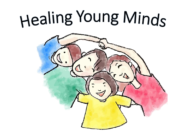Anxiety disorders are among the most common psychiatric conditions in children and young people. Just over two percent of five to ten year olds have a diagnosable anxiety-related disorder, and this doubles to five percent in eleven to fifteen year olds.
Anxiety disorders are particularly common among children with Autism Spectrum Disorders (ASD) and Attention Deficit Hyperactivity Disorder (ADHD). Around forty percent of young people with ASD have a comorbid anxiety disorder. At least one quarter of children and young people with ADHD are thought to have a co-existing anxiety disorder.
Anxiety is a part of life for everyone and some anxiety is essential because it helps us to act to protect ourselves and ensure our safety. However, when the level of anxiety is such that the child or young person has significant difficulty functioning in their day to day life this is likely an indication of a diagnosable anxiety disorder. For example, if the anxiety is having an impact on school attendance and/or academic progress and/or an impact on mood, sleep, eating, or mental health in general.
Causes
There is no single cause for anxiety but it is usually a combination of factors such as the child’s family history (genetics), parenting behaviours, early adverse events including neglect and attachment difficulties, and stressful life events or changes.
Stress at school such as being a victim of bullying, worrying excessively about exams, or transitions to a new school or a new academic year, may trigger anxiety. A stressful environment at home caused by conflict between parents, bereavement, moving house, or physical or mental illnesses in the family, may also trigger anxiety.
Diagnosis
If you suspect that your child may be suffering with an anxiety disorder it would be appropriate to see a mental health professional if your child presents with some of the following difficulties and these difficulties are affecting their mental health and emotional wellbeing and stopping them from participating in school and social activities:
- – Finding it hard to concentrate with difficulties keeping up with school work.
- – Increased fidgetiness and/or restlessness.
- – Difficulties falling asleep at night and/or waking up in the middle of the night and struggling to get back to sleep.
- – Not eating properly or eating excessively (comfort eating).
- – Changes in mood with tearfulness or crying that seems to happen out of the blue.
- – Irritability or being on edge, snappy, or quick to get angry.
- – Expressing worries, imagining worst case scenarios, anticipating threats in many situations.
- – Expressing negative thoughts about self, life, and/or the future.
- – Younger children may frequently complain of tummy aches or headaches or generally feeling poorly.
- – Repetitive behaviours or rituals which are done to try to control the anxiety or the environment.
- – Being clingy and/or struggling to separate from parents or caregivers.
Treatment
There is evidence that most young people with anxiety disorders don’t access clinical services, and therefore don’t receive treatment. Reasons for this include lack of awareness of the problem, long waiting lists, and not knowing where to seek help.
Evidence-based treatment includes CBT (Cognitive Behavioural Therapy) and medication.
Cognitive Behavioural Therapy
CBT is considered to be effective treatment for anxiety in children and young people. However, any comorbidity especially a neurodevelopmental condition such as ASD, must be taken into consideration and the therapy adapted accordingly for it to be successful.
School-based Interventions
Anxiety management groups in school or tailored adaptations may help control anxiety particularly if the trigger is school-related.
Medication
Medication is not routinely offered to children and young people for the treatment of anxiety disorders. This requires assessment by a specialist. Therapy is recommended first unless the child or young person are unable to engage due to the level of their anxiety. Medication can also be considered if therapy has not been effective or has had limited benefits only and the anxiety continues to have a significant impact on the child or young person’s mental health and functioning.
There is evidence to support the prescribing of SSRIs to help manage anxiety.
Please contact us if you’d like to book an appointment to discuss this further.

